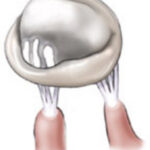If you have a bathroom, you will most likely be replacing its sink faucet at some point in your life. This may occur as a matter of bathroom updating, or it may become a necessity as the old faucet grows corroded or leaky. Here is some basic advice on how to go about removing your old faucet and installing the new one.
Removing the Old Faucet
Turn off the old faucet’s water supply by either shutting off the main water valve or by closing the dual water valves leading to the faucet. Now, open your faucet’s hot and cold water handles to drain out what water is left in the faucet plumbing.
Take an adjustable plumber’s wrench and disconnect the hot and cold water supply lines fitting into the faucet. There are usually nuts and washers located at both the top of the supply lines and at their bottoms; it’s your choice in terms of which ones you would rather undo. However, because many sinks are limited in terms of head, hand, and tool room, you may get stuck undoing the bolts at the bottom of the supply lines. If you intend to keep these supply lines, as opposed to just buying new ones, then make sure to also disconnect them from the old faucet, at its base.
If the faucet is old, you may have to really apply some force when removing the lines. Unfortunately, many older faucets are connected to supply lines made of copper, and copper tends to bend easily under stress. The good news is that, should you happen to twist off a water supply line, this part is easily replaced after a quick trip to your local Home Depot or Lowe’s home improvement store.
Once the water supply lines are off, it’s time to actually remove the old faucet. Bathroom faucets can be attached to the sink in one of two ways: to the sink’s bottom or top. If attached to the sink’s top, then remove the faucet handles and escutcheon in order to gain access to the nuts holding the faucet in place. Use the plumber’s wrench to take them off.
In the case of a bottom-mounted faucet, the nuts are located on the underside of the sink. Somehow, you’ll need to squeeze yourself under the sink in order to remove those nuts. Likewise, you’ll have to fit the plumber’s wrench into this space. If the wrench is too big and bulky to do any good, try a pair of pliers. A special type of wrench, called a basin wrench, may also help, since this wrench was designed to work in tight spaces.
Once the nuts are removed, you can usually just lift the faucet off the sink. Sometimes, though, it will be packed with caulking; find a small utility knife and scrape off the caulking around the faucet’s base. There may also be hard water deposits, rust, and other items holding the faucet in place. It may be useful to apply a solution of vinegar and water in order to loosen the faucet and, in so doing, clean up the sink.
Installing the New Faucet
Installing a new faucet is much easier than removing the old one. For a top-mounted faucet, put the new faucet in place and put on the washers and mounting nuts. Hand tighten the nuts. Then, align the faucet with the back of the sink. Now tighten the nuts with a wrench.
Put a line of silicon caulking (you can also use plumber’s putty) around the edge of the faucet so that water does not leak under the sink. Finally, install the escutcheon and faucet handles.
A bottom-mounted faucet will take a little bit more finesse. First, put the new faucet in place of the old one. Now you will need to get under the sink and tighten the washers and nuts with a wrench or set of pliers. Some bottom-mounted sinks also come with a plastic ring through which the bolts can run and which gives something for the nuts to hold onto. If you have such a plastic ring, fit it in place first before attaching the washers and nuts.
Once the nuts are half-tightened, inspect the faucet to make sure that it is aligned and parallel to the sink. In such cases, it is useful if you have a helper checking your work. Once you’ve made certain the new faucet is aligned, finish tightening the nuts.
Put a line of silicon caulking around the new faucet and clean up any excess. Reinstall the water supply lines, then turn the water back on and check for leaks. There you have it- you’ve just installed your new faucet.





